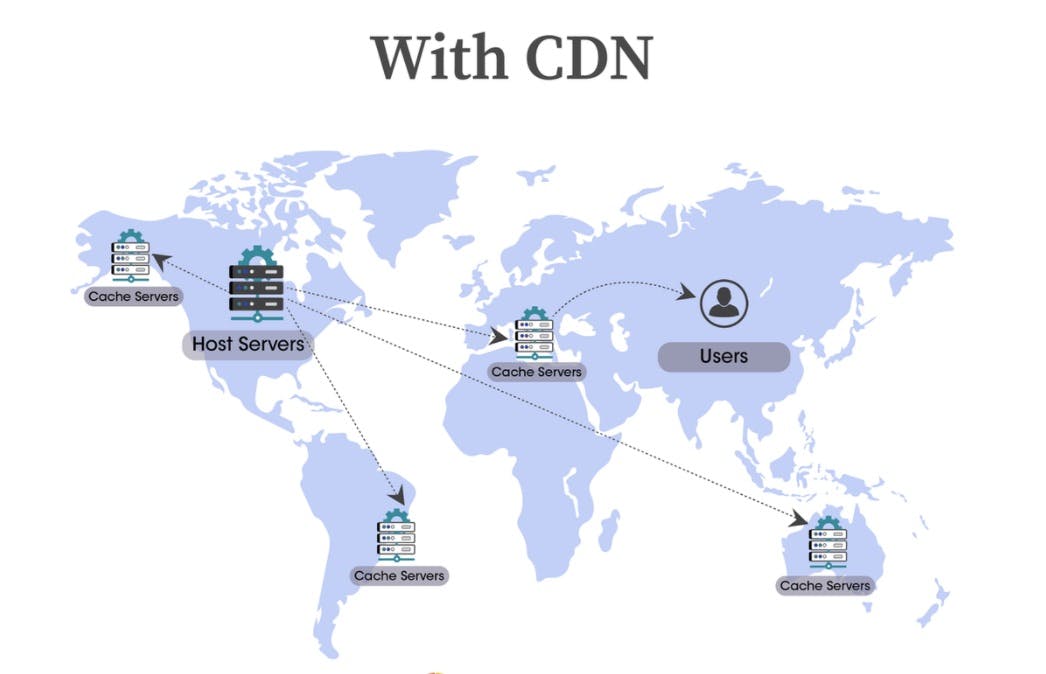What is the Content delivery Network?
We need to break the term “content delivery network” down into its three parts:
- Content: The data you provide to your website visitors (web page, video, image, etc.)
- Delivery: How this data is retrieved by the user
- Network: The places where your data is stored at any given time.
CDN Content Delivery Network is a group of servers spread out over many locations that deliver your content to the nearest user, as opposed to one server location, which can take time to deliver the content.

CDN Types There are three types on CDN.
- Peer to Peer CDN- The Peer to Peer CDN utilizes the Peer-to-Peer protocol. CDN providers offer their P2P service at free of cost.
- Push CDN – In a push CDN original server push the content to edge servers.
- Pull CDN - In a pull CDN, the CDN doesn't cache web pages in advance. Once it gets a request, it 'pulls' the original file from the host server. It then caches it for further requests.
Examples of CDN: Amazon CloudFront, Akamai CDN, Google Cloud CDN, etc.
Amazon CloudFront Key Features:
- Faster Performance.Network optimizations for optimal performance.
- Security. Protection against Network and Application Layer Attacks.
- Programmable and DevOps Friendly. Full-featured APIs and DevOps Tools.
- Cost Effective. Pay-as-you-go publicly available pricing and discounted pricing.
How does it work

The process of accessing content cached on a CDN network edge is almost always transparent to the user. CDN management software dynamically calculates which server is located nearest to the user making the request and delivers content based on those calculations. CDN edge servers communicate with the content's origin server to deliver cached content and new content that has not been cached to the user. Edge servers reduce the distance that content travels and the number of hops a data packet makes. The result is less packet loss, optimized bandwidth, and faster performance. That minimizes timeouts, latency and jitter and improves the user experience. In the event of an internet attack or outage, content hosted on a CDN server remains available to some users. Organizations buy services from CDN providers (like AWS CloudFront, Akamai) to deliver their content to users from the nearest geographic location. CDN providers either host content themselves or pay network operators and internet service providers to host CDN servers.
Why would you use it?
It ensures website availability, optimizes asset delivery, and offloads traffic from the hosting server.(CDN) can decrease the latency involved when delivering your content around the globe.
Key benefits
- Fast browsing experience for the users with less site loading time.
- Reduces the resources usage of your parent host because the bandwidth eating media and theme files are served through CDN.
- Low connectivity latency because of the distributed servers.
- Bandwidth saving. As your media and theme files are served from the CDN servers, it will save the bandwidth of your main server.
- Reducing bounce rate. Bounce rate is proportional to the visitor’s satisfaction, normally people stay away from a slow loading site. Your site may be an awesome source of information, but people will not come back if it loads slow.
- Increase the life of your web hosting plan.
Conclusion:
In this blog we learned what is CDN and how that work and the benefits.

